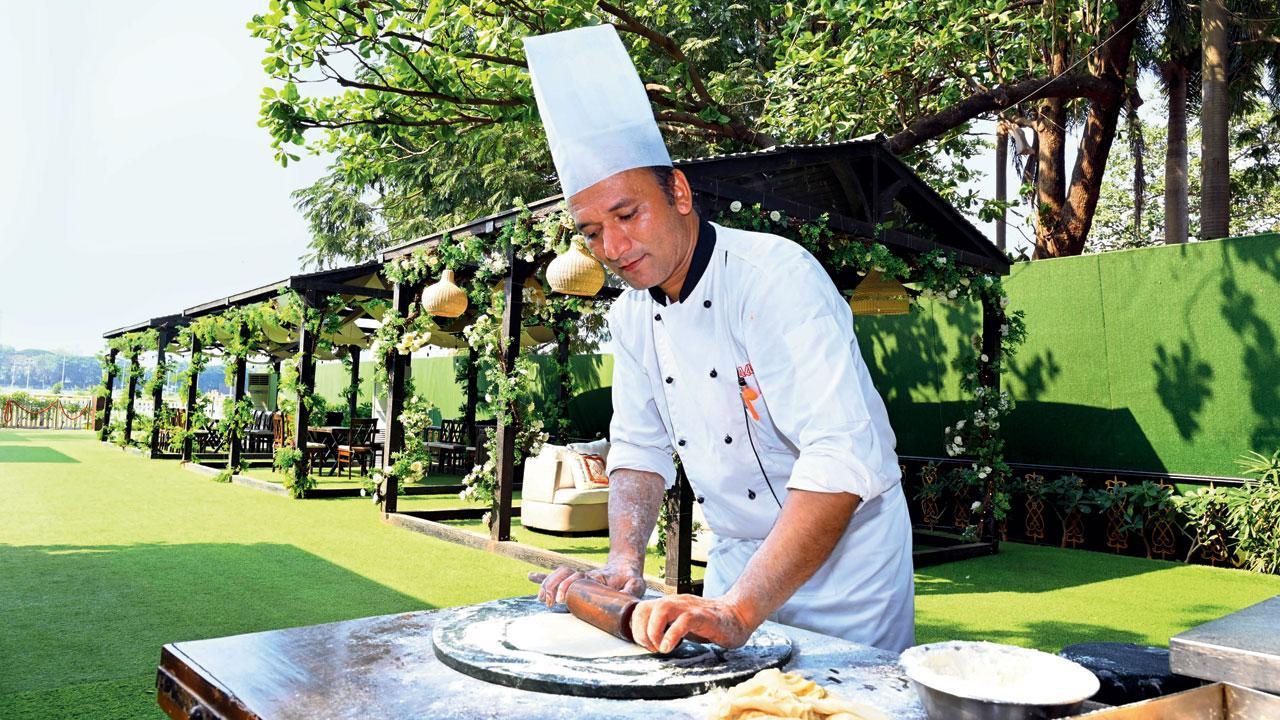Home / Sunday-mid-day / / Article /
Have you seen roomali lately?
Updated On: 26 May, 2024 09:58 AM IST | Mumbai | Nasrin Modak Siddiqi
Roomali rotis disappearing from the city’s menus got us curious. Sunday mid-day went tossing and spinning to build a case to #bringbackroomali

Rajendra Singh Doriyal is a master at the craft of making the perfect, soft, roomali rotis. He credits the dough for the making of it. Pics/Anurag Ahire
From the tiny village called Tungana in Tehri Gharwal, learning the art of tandoor in small kitchens, Rajendra Singh Doriyal has mastered the twist of wrist needed to make the gossamer-thin roomali roti. One needs fine motor skills to spin the diaphanous flatbread in air until it stretches into the required shape, thinness and texture, before being folded like a handkerchief (hence roomal).




